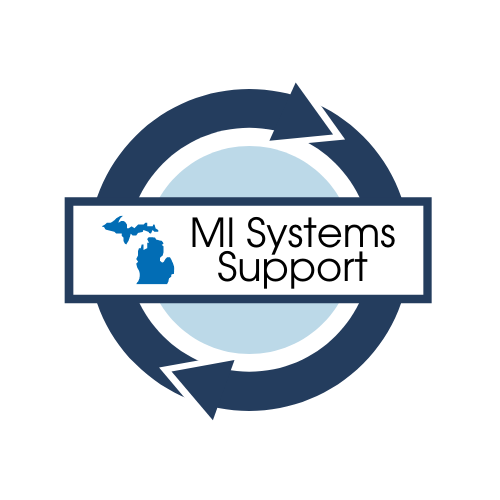
Data-Driven Decision-Making
Protocols
Fishbone Protocol
Summary
A fishbone diagram, also known as a cause-and-effect diagram or an Ishikawa diagram, is a visual tool used to identify and analyze the potential causes of a problem or an effect. It is named after its shape, which resembles the skeleton of a fish, with the problem or effect being represented as the "fish head" and the potential causes branching out like the "fishbones."
By using the fishbone diagram in education, educators and stakeholders can gain a systematic understanding of the multiple factors that contribute to a problem, enabling them to develop targeted solutions and improve the educational outcomes for students.
-
Collaborative teams at the state, ISD, district, school, and/or teacher team levels might choose to utilize the fishbone protocol in a variety of ways. For example:
Problem identification: A fishbone diagram might be utilized to identify and understand the root causes of various issues or challenges faced in K-12 education. For example, if a school is experiencing a high dropout rate, the diagram is structured to help teams identify the underlying factors contributing to this problem.
Categorization of causes: The fishbone diagram provides a framework for categorizing potential causes into different branches or categories. In the context of K-12 education, these categories might include factors related to curriculum, teaching methods, student engagement, parental involvement, school culture, resources, or external influences.
Identifying root causes: The diagram facilitates a structured analysis of the causes by drilling down to more specific factors within each category. This process helps to identify the root causes that are contributing to the problem. For example, within the category of teaching methods, sub-causes might include outdated pedagogical approaches, inadequate professional development for teachers, or a lack of differentiated instruction.
-
-
This protocol might support any readiness and planning activities
Connections can be found through the research-based practices:
Instructional System
Student Support System
Talent Management System
Teacher Collaborative Routines
High Tech High Graduate School of Education (2008-2023). https://hthgse.edu/resources/fishbone-generation-protocol/
5 Whys Protocol
Summary
The 5 Whys technique is a questioning process designed to drill down into the details of a problem or a solution and peel away the layers of symptoms. The technique was originally developed by Sakichi Toyoda who stated that “by repeating why five times, the nature of the problem as well as its solution becomes clear.”
-
Collaborative teams might consider using the 5 Whys Protocol as a tool for root cause analysis. A video demonstrating how a fictional district utilized the 5 Whys Tool when examining their M-Step data has been included in the Supporting Resources section.
-
-
Connections can be found through the research based practices:
Instructional System
Student Support System
Talent Management System
Teacher Collaborative Routines
The 5 Whys template was modified by the Utah Education Policy Center from the Residents First HQQ Initiative, available at 5-Whys Guide & Template
Collaborative Learning Cycle (CLC)
Summary
The collaborative learning cycle is a framework that establishes a learning forum for group exploration of data. This field-tested protocol created by Laura Lipton and Bruce Wellman supports developing shared expertise and confidence with collaborative data work.
-
Collaborative teams might consider using the Collaborative Learning Cycle [CLC] when examining and problem solving data. The protocol encourages teams to make data predictions, identity related assumptions, create data narrative statements, identify potential causal factors and create an action plan. For a deeper understanding of the CLC process, individuals and/or teams might wish to engage in the CLC On-Demand Professional Learning course, found on the MI Systems Support website under the Professional Learning tab. A link to this course can be found in the Supporting Resources section.
-
-
Connections can be found through the research based practices:
Instructional System
Student Support System
Talent Management System
Teacher Collaborative Routines
Lipton, L., & Wellman, B. (2012). Got data? Now what?: Creating and leading cultures of inquiry. Solution Tree Press.
Facilitation Guide: Modified Tuning Protocol
Summary
The Modified Tuning Protocol is a tool that might be used during a data-driven decision-making process in order to gather additional perspectives and/or collect new ideas around a problem of practice identified through data analysis.
-
The Modified Tuning Protocol is a short-term improvement cycle that might be used by collaborative teams at the ISD, District, Building, and Teacher levels where members are seeking to have short data conversations centered around a problem of practice, a district goal, or individual student work. The protocol might also be used during staff meetings in order to examine building level data to solve immediate problems. District leadership teams might use the protocol as they monitor implementation of programs, curriculum changes, and/or initiatives. The modified tuning protocol presentation can be found in supporting resources and is designed to use alongside the facilitation guide.
-
-
Connections can be found through the research based practices:
Instructional System
Student Support System
Talent Management System
Teacher Collaborative Routines
National School Reform Faculty. NSRF Protocols and Activities. https://www.nsrfharmony.org/wp-content/uploads/2017/10/Tuning-N_0.pdf
